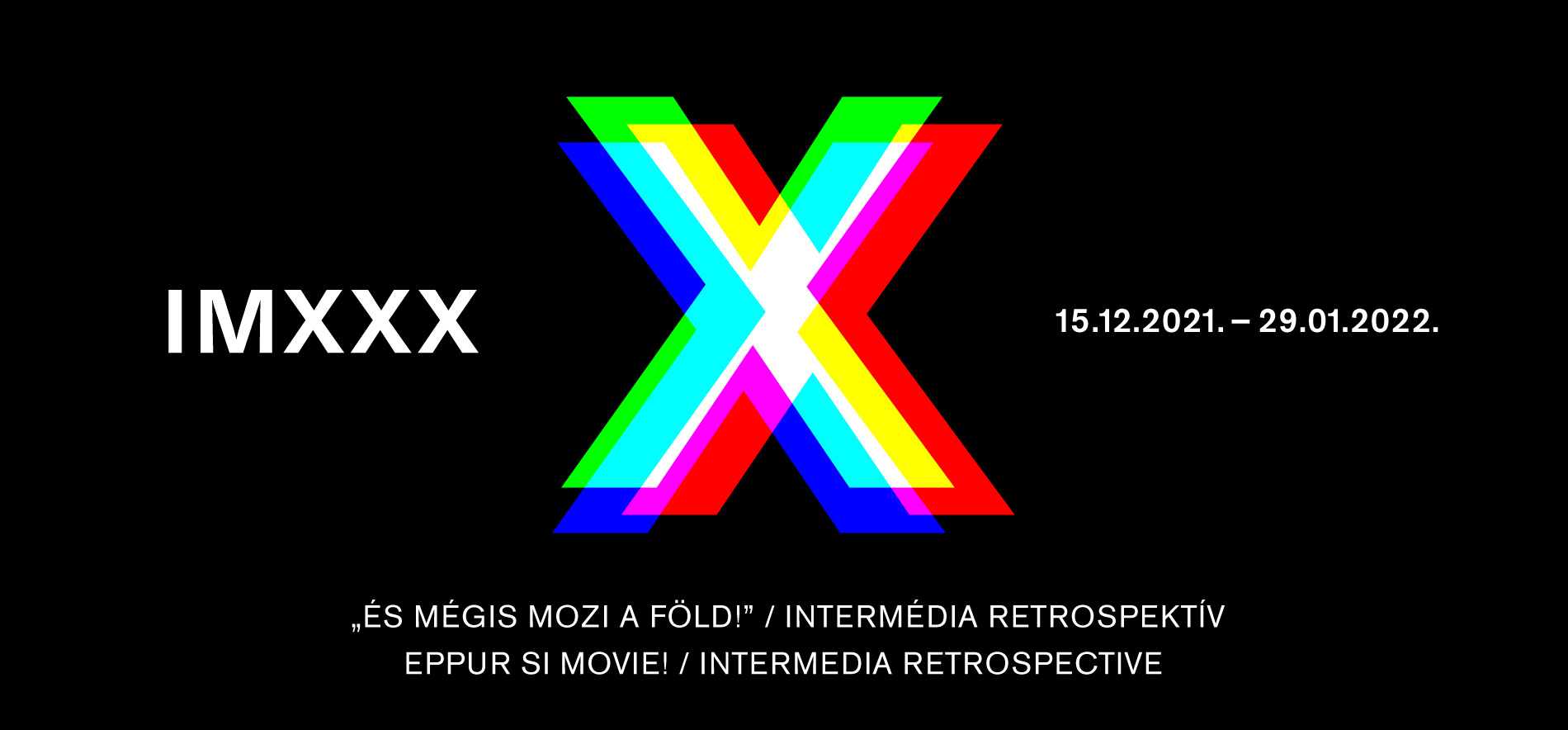
EPPUR SI MOVIE! IMXXX – Intermedia Retrospective
Exhibited artworks
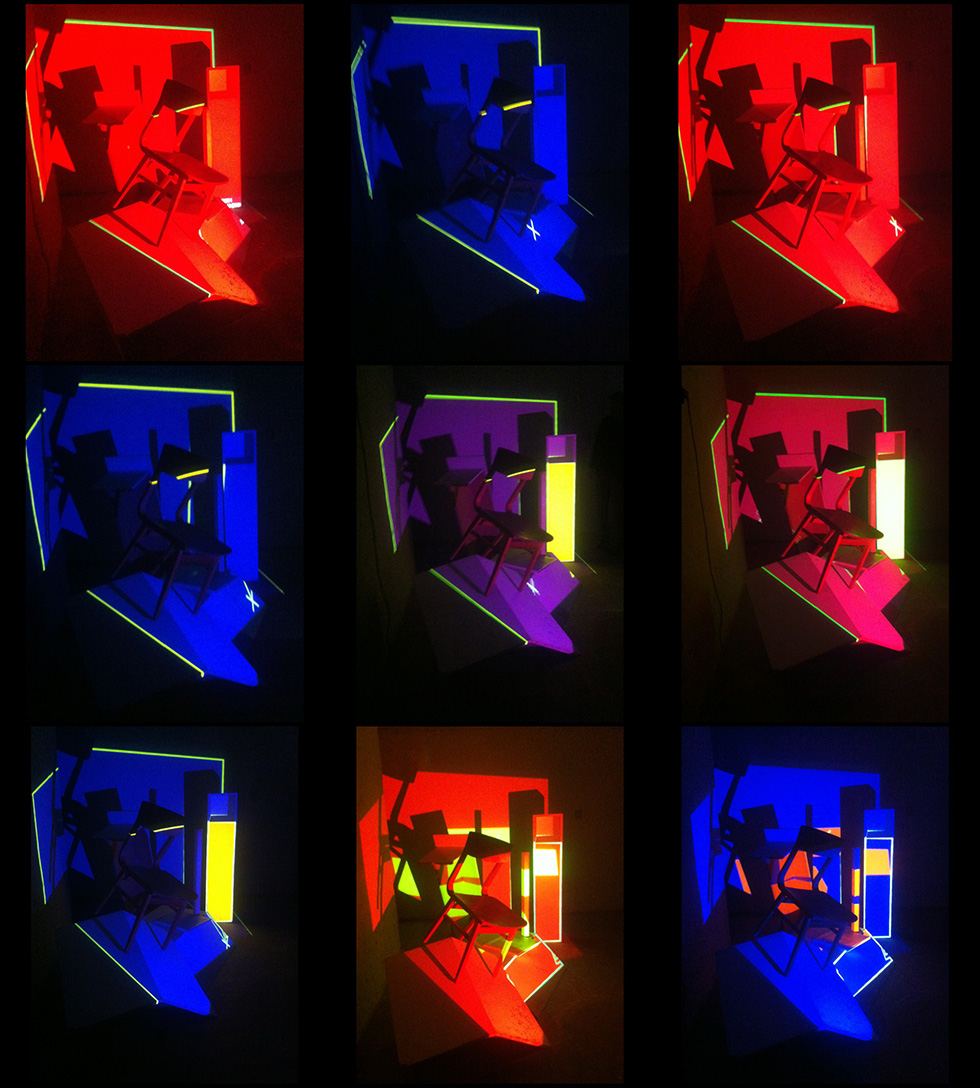
Ákos Plesznivy – Áron Tihanyi, mapel, projection mapping video game. Installation, 2021.
Tihanyi Áron, this.type, interactive projection mapping, 2021.
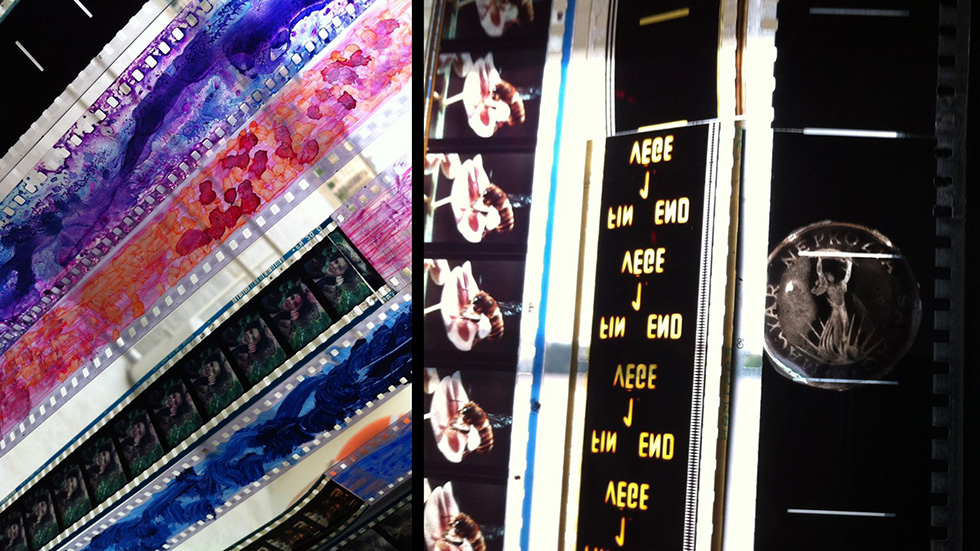
Analogue Film Editing
The founder of the Intermedia Department's analogue 16mm and 35mm celluloid-based film editing course as well as the instructor of the course that is open to all art students, is none other than editor Mária Rigó, holder of the Béla Balázs Prize. The work in the editing room is based on two scrapped but perfectly functioning film editing tables and thousands of feet of unused, cut and discarded film scraps or film remains, which are art once the tool and the raw material for learning about this century-old technique that is gradually falling into oblivion, and also for creating new works of art. Over the past two decades, nearly a hundred new films have been created, and we present a selection of analogue works made between 2010 and 2021, in digital format. Alkotók: Bakacs Éva, Balogh Emese, Barnaföldi Anna, Becze Dóri, Berta Júlia, Bóka Krisztina, Borsik Lili, Burucz Szabolcs, Farkas Lúcián, Hoff Bence, Horváth Róbert, Horváth Zsófia, Huszár Ildikó, Huszti Zoltán, Juhos Antal, Katona Norbert, Kazai Hajnal, Kicsiny Martha, Kovács Gyula, Kő Ábel Holló, Krnács Sára, Melykó Richárd, Modor Viktória, Németh Dániel, Pamuk Lili, Plesznivy Ákos, Seemann Adrienn, Spitzmüller József, Szilágyi Kornél, Szűcs Anda, Szvoboda Zsófia, Takács Flórián, Tanker Kata, Tihanyi Áron, Varga Panna
Collaborating partner (digitisation): National Film Institute of Hungary https://nfi.hu/en
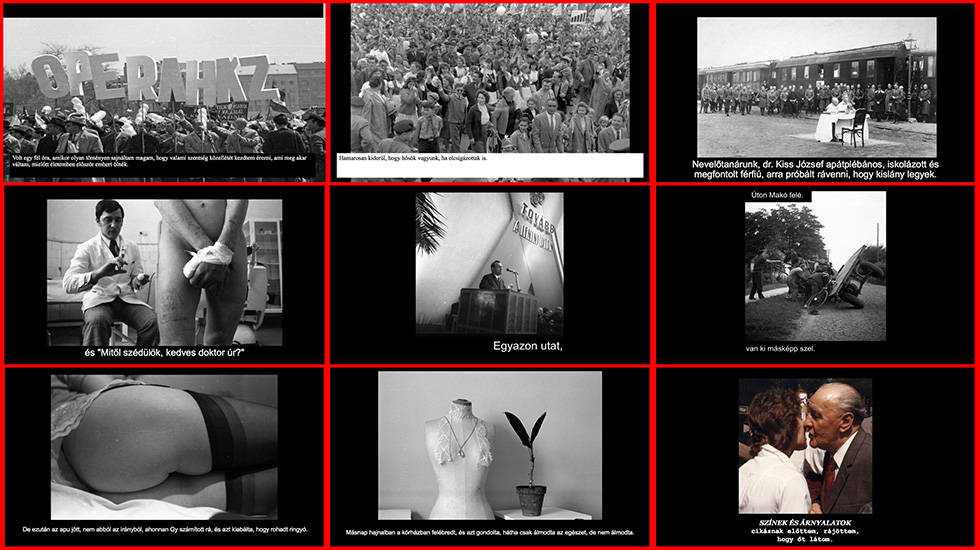
Past – Picture – Narratives (fortepan slide filmstrips)
The assignment focuses on the public image archive Fortepan.hu, and aims at producing narrative slide filmstrips by inviting the students to research the socio-political and historical background of the photos based on their pictorial analysis. The assignment relies on the following keywords: archive and information, research based practice, the relation of documentarism and fiction, and the interaction of text and image. (Szabolcs KissPál)
Martina Botos: The Major’s Visit, 2019
Adél Csököly: Some Possibilities of Self-fulfilment, 2018
Richárd Melykó: Ajna and the Pink Glasses, 2018
Dániel Németh: Movie at the EMKE , 2018
Noémi Németh: Invisible Hell, 2019
Lili Pamuk: Maidens 2018
Regina Sárvári: Dunaújváros 1986, 2019
Evelin Séfer: 1977 The Theorem of Open Future, 2019
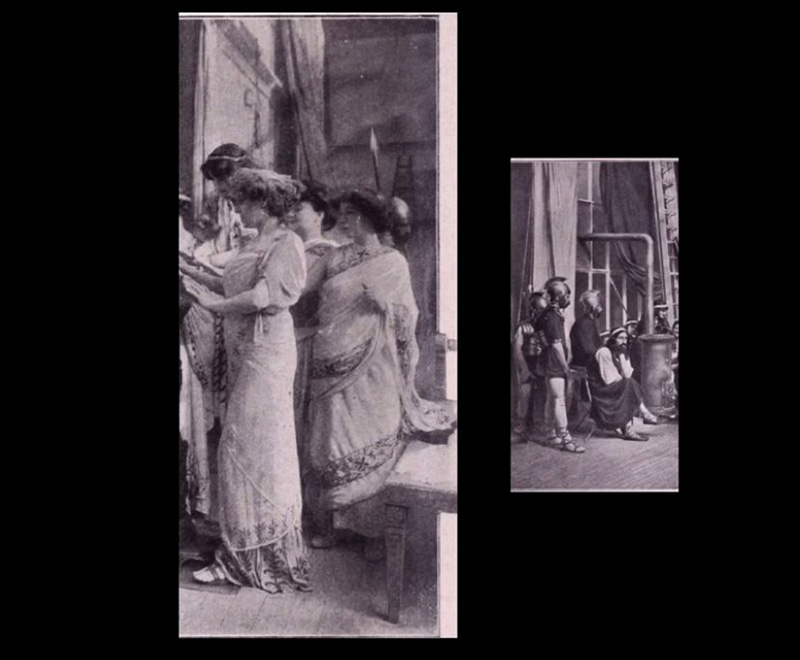
Anna Barnaföldi, SWIPE, 2021. Video, silent, 5 hours (weekdays) or 8 hours (weekends).
The screening will show three images. The images are illustrations from the article The Moving Photograph, written in 1909.
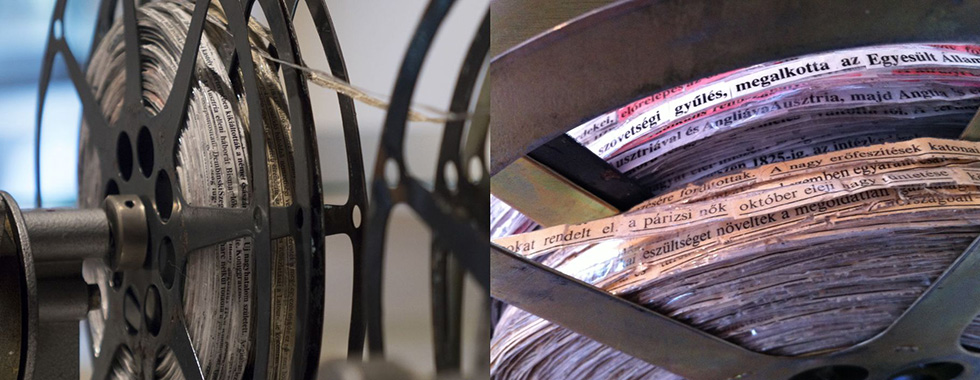
Anna Barnaföldi
“Text Parts to be Learnt by All Means”
Installation, mixed media, 2012
“Text parts to be learnt by all means are highlighted with bold.” It is with this sentence that the authors of a secondary school history book indicate in its preface why they use bold type in the textbook. I transformed a history book from 1974* and another from 2002** by cutting out only sections of text that had been highlighted or underlined. I placed these next to one another, glued them together, and presented them in the form of a roll, as an installation. In the course of my work, I was very interested in the selections that had been made by the authors, who were separated by a period of about 25 years. Which parts of these “texts to be learnt by all means” remained the same, what changed, and which parts increased or decreased over time?
* Mátyás Unger: History for Third Form High School Students, 10th, revised edition, Textbook Publisher, Budapest, 1974 [1967]
** Géza Závodszky: History III for Secondary Schools, 7th revised edition, National Textbook Publisher, Budapest, 2002 [1999]
Photo credit: Ferenc Eln, 2015.
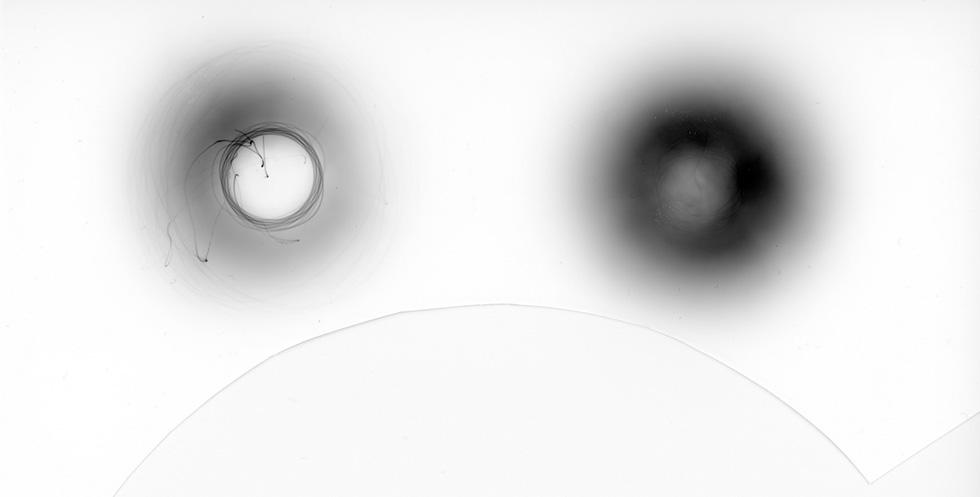
Gyula A. Kovács Solar diagram - Camera obscura on photo paper – originals, prints, series, variable dimensions, 2017/2019.
My interest focused on the variation of the trace of sunlight. How it is affected by the atmosphere, by the seasons – in correlation with photosensitive materials and chemicals. Motion is a tool of time, whereby the slow can be slowed down even more and change over time becomes readable. I use the pinhole camera to continuously capture real changes in a way that allows the process to be reconstructed based on individual characteristics. The tool for this is my camera built from a cylindrical film canister which has a circular base. The sun as a celestial body is the direct subject and therefore it physically determines the field of view. Environmental changes over time are observed and represented in an abstract, graph-like system. The key to capturing the image is the two different speeds of motion. On the one hand, the slow changes that occur during exposure: changes in atmospheric phenomena, the rotation of the Sun and the Earth. On the other hand, the much faster movement of the camera: the circular camera embodies dynamism. The process is a kind of performance that seems to be very different from the usual method of photography. The trajectory followed with the camera rotating around its own axis performs a movement that can be seen as continuous. It is only interrupted at the resting point and when gaining new momentum. The motion of the pinhole camera provides continuous imaging and a frame of reference. In order to record the changes that take place, the exposure time must be prolonged. This is what the rotation is for, always causing light to reach the light sensitive material at a different point, so that it has a relatively minimal effect. This is also what makes the image readable, that is, decipherable.
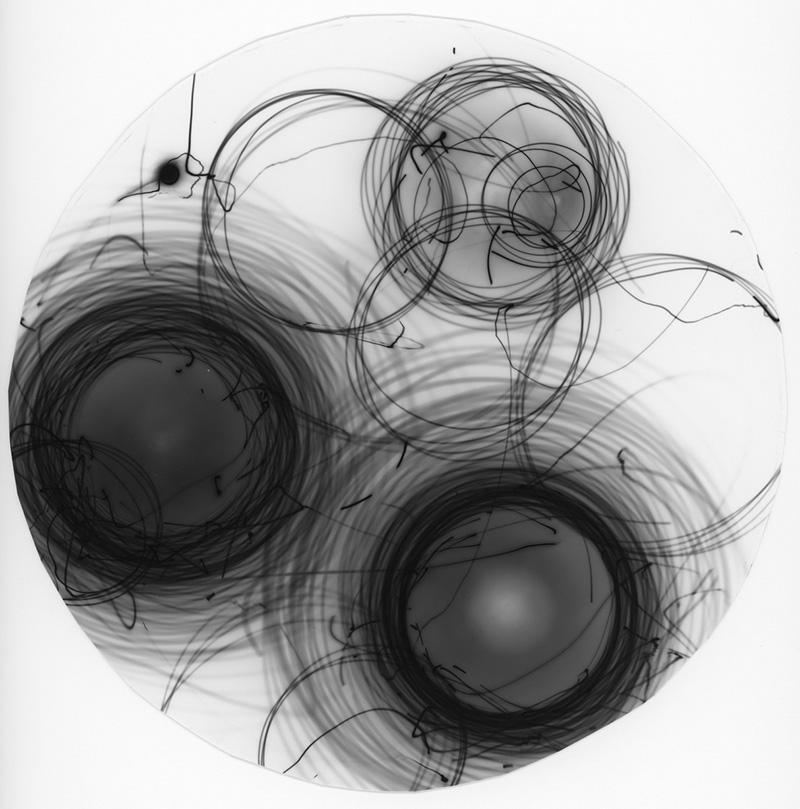

Loránd Szécsényi-Nagy, Days. Series, special photographic technique, print, video, 2017/2021.
“Days” is the collective title of my photographic works made in recent years, exploring the interaction of time and space. During my research, I built cameras capable of capturing a 1-day exposure on analogue colour photo paper. My exhibited projects are closely related and complement each other. In the first series, I sought to extend the process of solargraphy by visualising colours, and then experimented with positive films, some of which could be developed and others could be projected instantaneously after long exposure by pushing the limits of the substrate. I used the latter to capture the passage of time in image sequences on a monthly scale, and in my most recent work I have explored the peculiar intersection of space and time surrounding the camera.
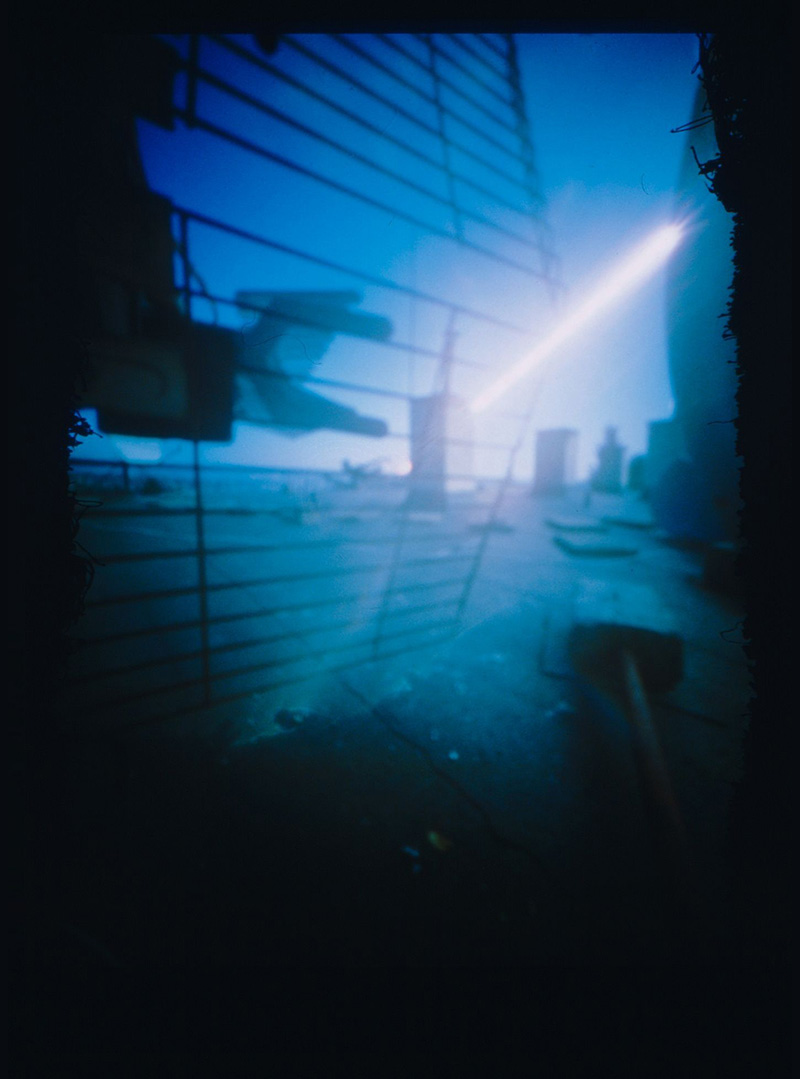
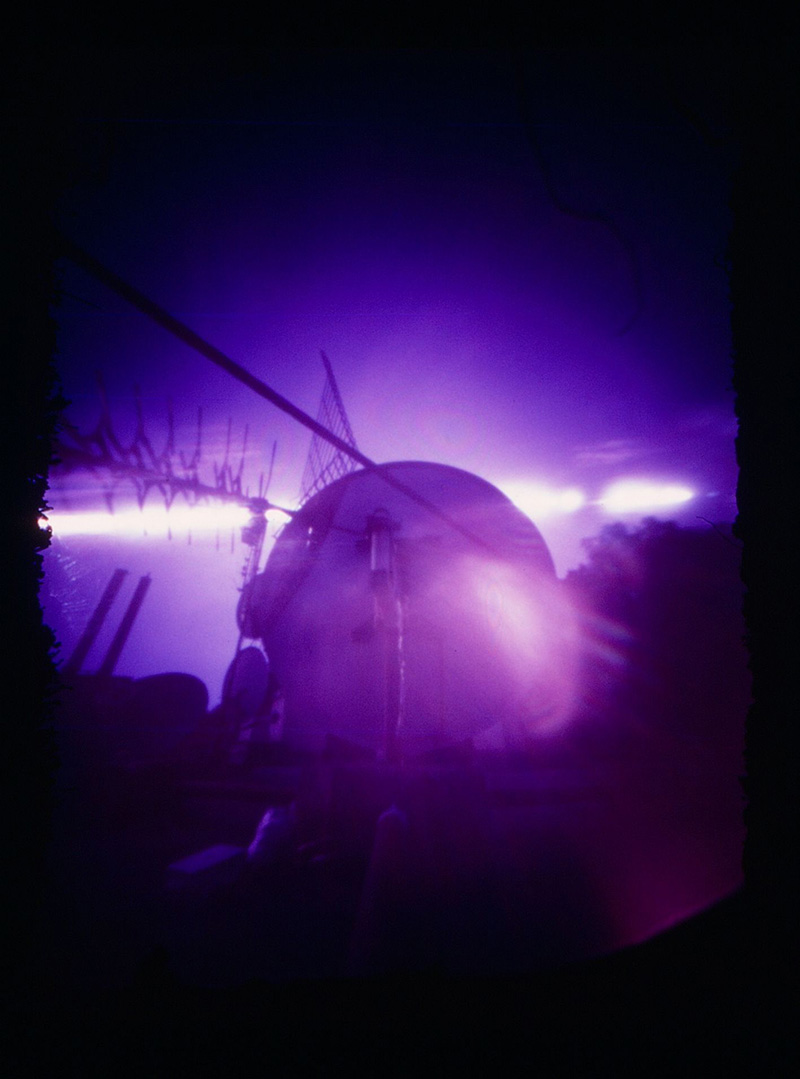
Loránd Szécsényi-Nagy
1 day, 2017, analogue photo series, variable size (exhibited image: Ponte 25 de Abril, 68 x 68 cm)
Days, 86400.00066sec - instant, 2019, analogue instant photographs 8.9 x 10.8 cm
Days, 86400.00066 sec - sequencer, film projection
Space-time panoramas, 2020, analogue photo series, variable dimensions. Exhibited images:
Budapest 02.06.2020 [21:00] - 03.06.2020 [12:00] 309 x 50 cm
Balatonfüred 20.05.2020 [20:20] - 21.05.2020 [20:20] 331 x 50 cm
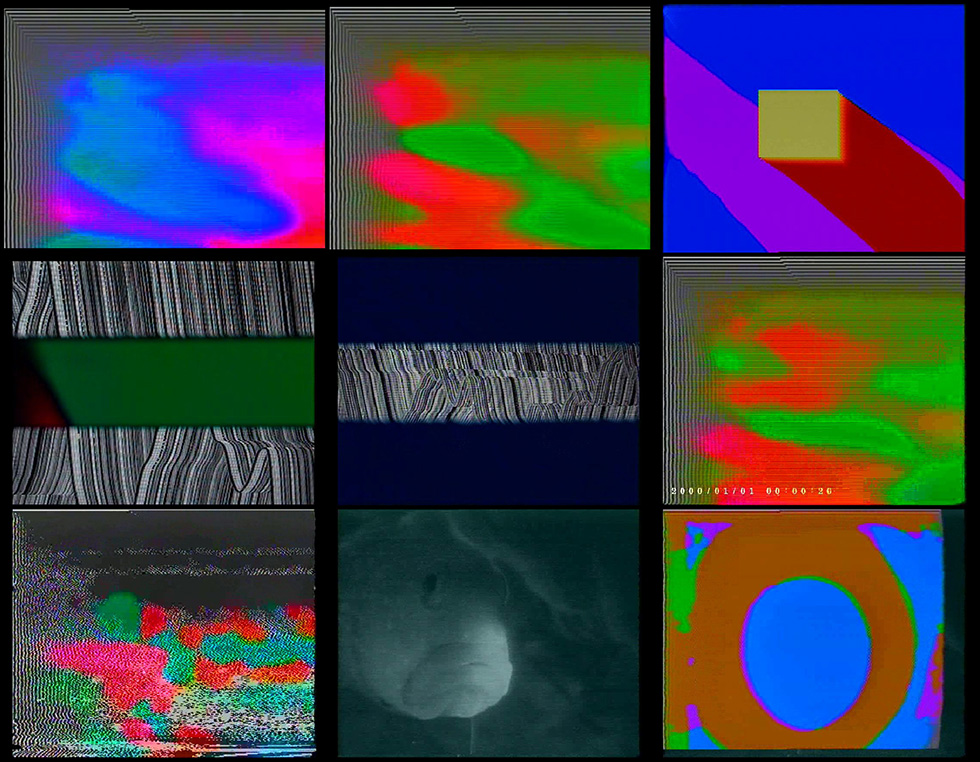
Anna Hoóz – Loránd Szécsényi-Nagy, Signals, video installation, 2020/2021.
Having moved into a new technological age, as obsolete devices are replaced, the medium also loses their determining attributes, which are then unreproducible with the new, state-of-the-art devices. The disappearance of these devices and the fading of the memories and emotions they elicit is usually something that nobody takes into account. A significant time has to pass before users realise they miss the click of the cassette player at the end of the tape, the crackling of the vinyl, and the gradients of the polaroid. With the end of the VHS era and the expansion of the digital age, analogue modulations and errors have almost completely disappeared. However, the desire for forgotten analogue errors remains present as the memories associated with them have become unconsciously imprinted on us. The exhibiting artists intend to explore the dimension of the boundary between human interpretability and machine perception through secondary temporal resonances and peculiar feedbacks in the architecture of the video installation. In video works an interface was created through which the medium is capable of modulating itself, thereby creating a new phase, a new layer. In the course of the feedback, the image data flows into itself and then floats on through screens. By compiling (self-)generated image streams from different image sequences, the structure of which is built up by overlapping the repeated signals, vortexes appear as analogue image noise, in which they can only be recognized as fragments of the original image content; fragments of a vanished virtual world.
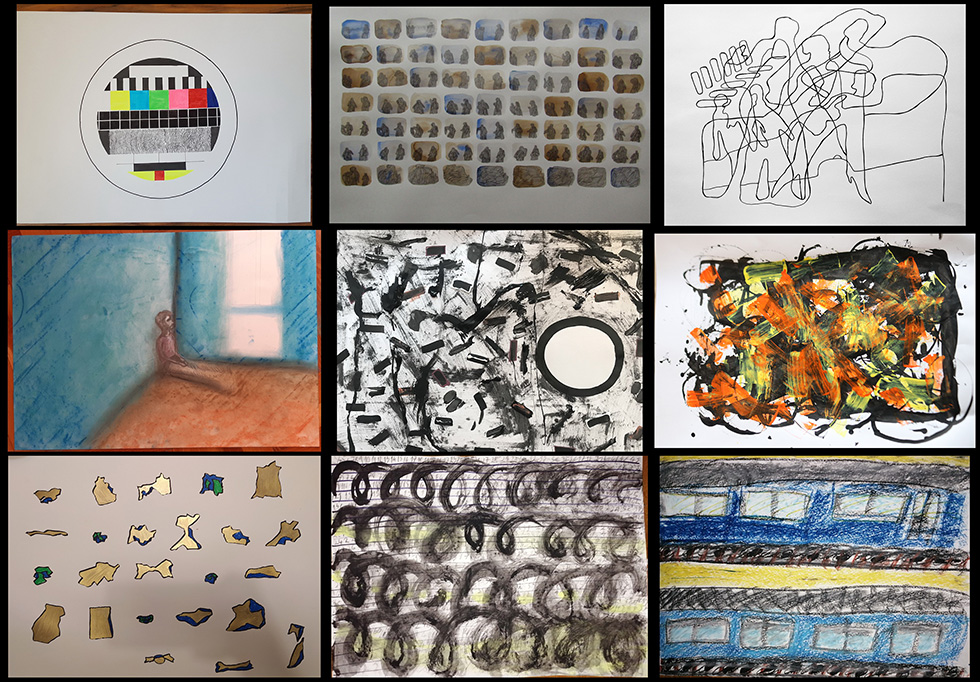
Film Drawings Theory of Technical Media course, Autumn 2020. Made by Fanni André, Anna Biró, Petra Hahn, Júlia Mohácsi, Krisztina Németh, Virág Réti, Kata Tóth, Vanda Túri, Lilla Zarándy.
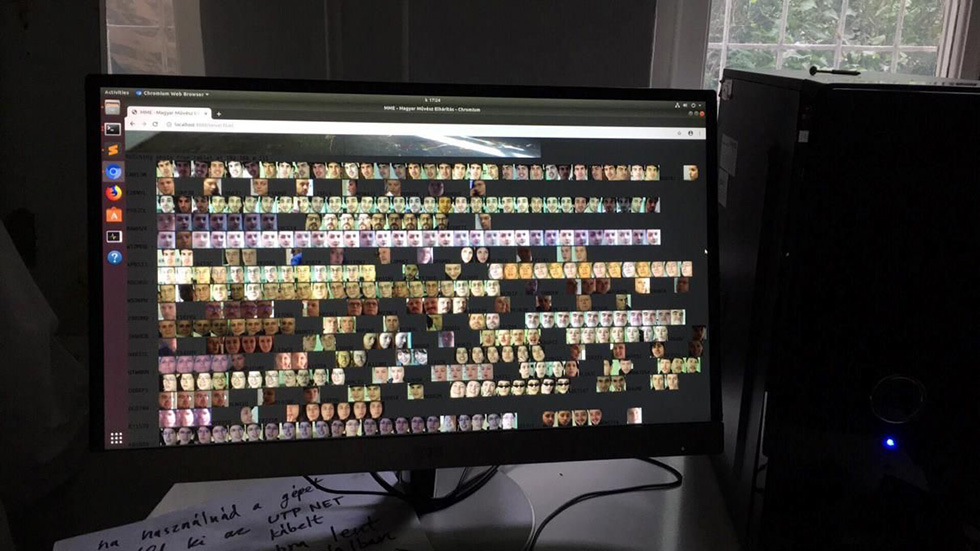
Barnabás Bácsi – Ákos Plesznivy,
H.U.F.A. – Hungarian United Front Against Artists 2019/2021.
Camera system for the identification and surveillance of art students. The algorithm recognises and learns faces, then assigns fictitious data to each person, which could serve as the foundation of a future evaluation system.
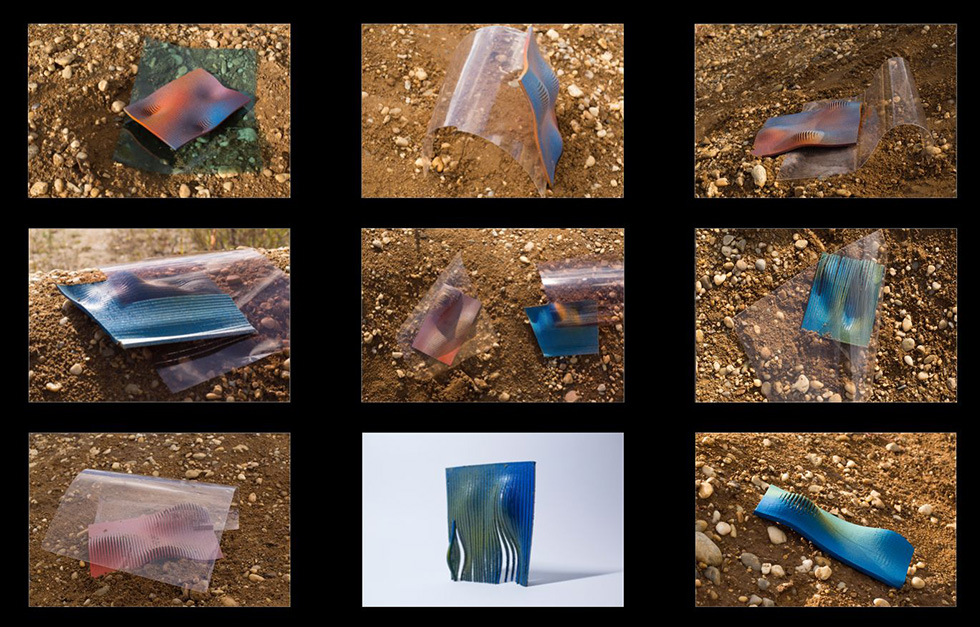
Anna Hoóz, forms as objects, 2020/2021.
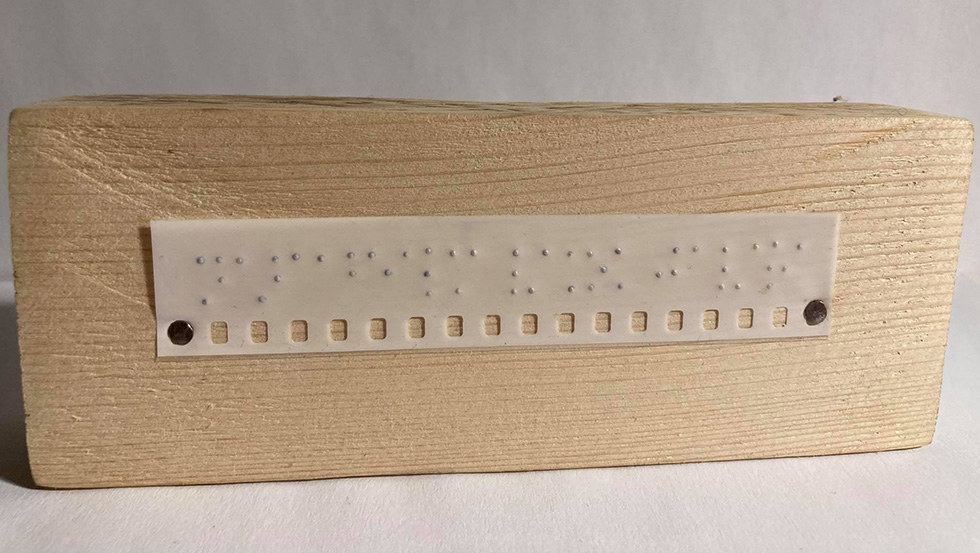
Richárd Melykó, Silent Film for the Blind, Object, 2021.
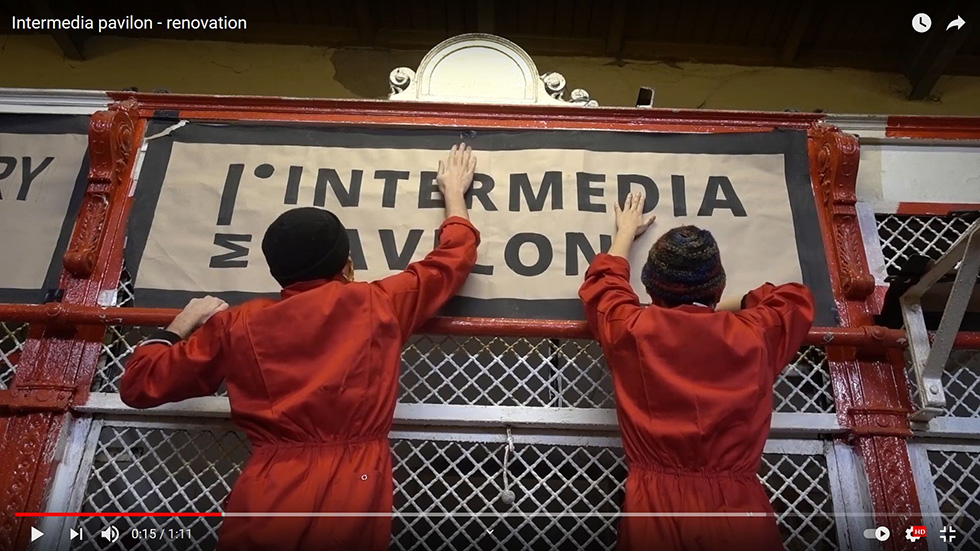
haimey (Illés Haibo, Richárd Melykó), Video-performances, video, website, 2020-2021.
The intermediate is treated as two endpoints. These bridges create different forces and decreases. The screen shows a selection of our video performances, which can be played back by tapping on the video thumbnails.
use the fire (bridges) 2021 kappa turns, 2021 empty picnic (bridges), 2021
windshake (bridges) 2020 renovation, 2021 mikado bridges (bridges), 2021
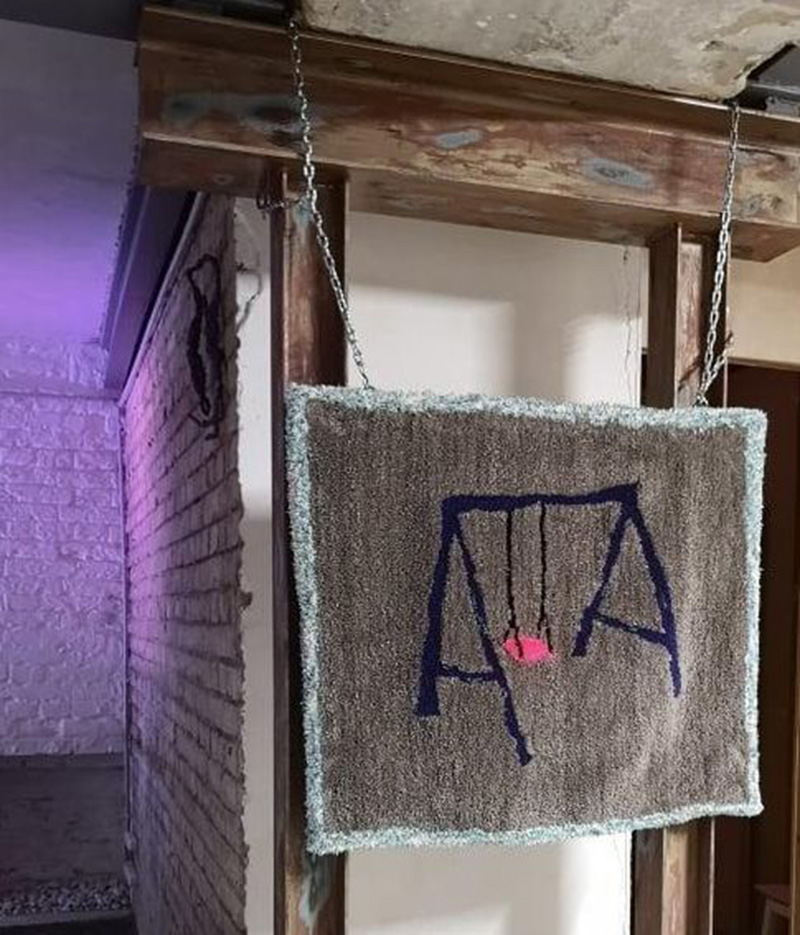
Adél Csököly, Textile, swing chain, 2021,
We all have memories of playgrounds. This is the sand table of children’s spontaneity and relationality. Is the swing driven by us or by another party: the father? mother? friend? the wind? Just like human relationships. We experience the state of movement in an arced and cyclical trajectory. Together or alone? I am preoccupied with the ambivalence of accidents/deaths that occur while having fun, as well as the interplay of materials-colours-forms. The outlines of a swing stand are visible on this carpet, with a single swing traced on it, all hanging on a swing chain. (Feel free to touch.)
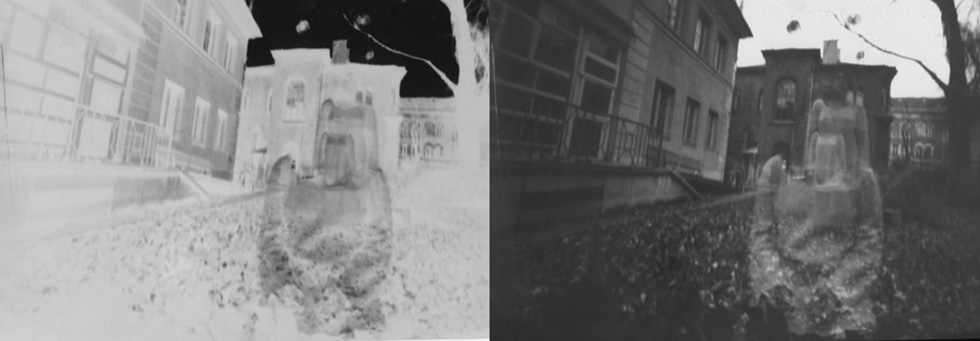
Hella Lestál, Multi-exposure photographs, 2016 – 2021. multi-exposure photography,
Phantom View, 2016. camera obscura, inkjet reprint
Interdomus, 2017. analogue film, inkjet reprint
Brain-rackers (photo film details), 2018. analogue film, inkjet reprint
Home of Homelessness, 2020. digital photo montage, inkjet print
Inward Journey, 2022. digital photo montage, inkjet print
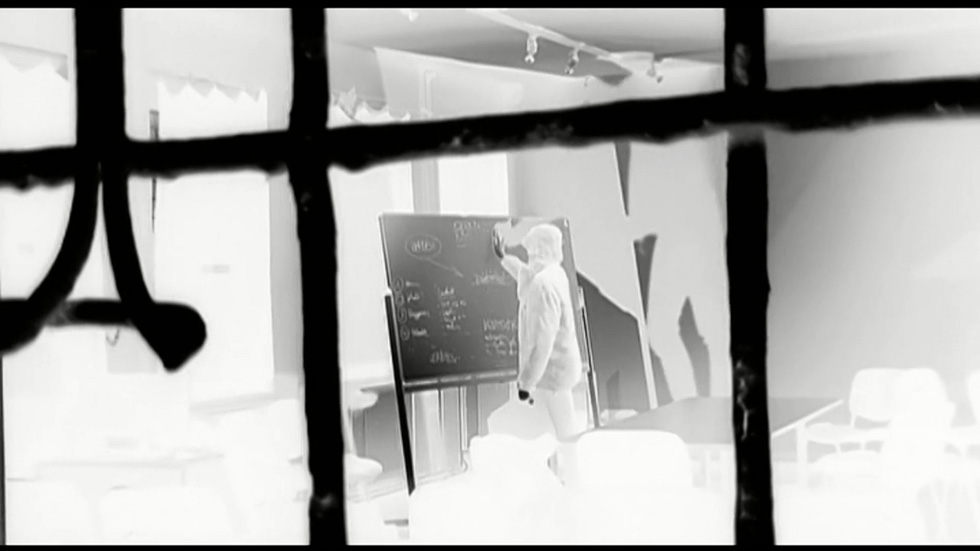
Gyula A. Kovács, access. Video, 2020.
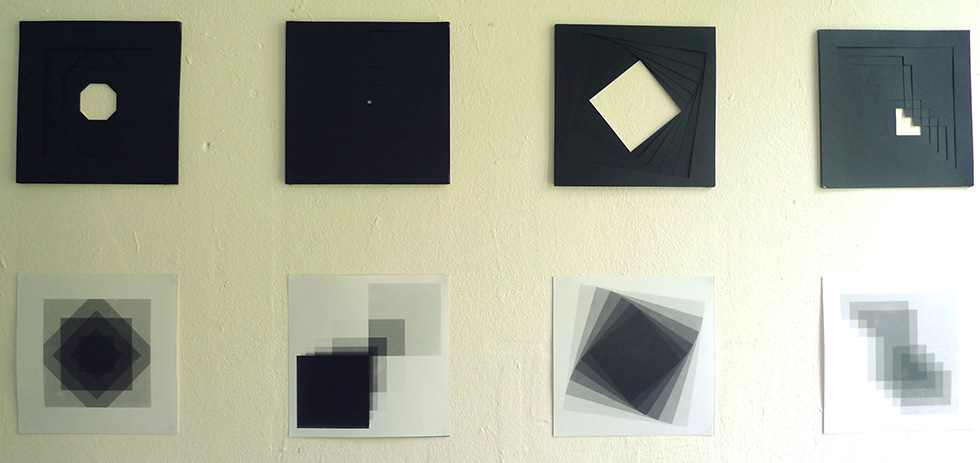
Áron Tihanyi, photogami, recursio.io, fotogram series, 2019/2021.
Áron Tihanyi, olisa, interactive (visual) docu-sci-fi, 2019/2021.
Tihanyi Áron, this.type, interaktív projection-mapping, 2021.
Pátkai Rozina, Mammary, Zikaron. 2020/2021. http://rozinapatkai.com/zikaron/
Tulisz Hajnalka, Everything's gonna be alright, Public art, videó animáció + dokumentáció, 2017.
Hajnalka Tulisz, Panning. Slit-scan camera shots, details, digital print, 24x550cm and 36x550cm, common support size: 1067x5500mm, 2010.
During its renovation, the Margaret Bridge in Budapest was closed to pedestrian and vehicular traffic, only trams were allowed to cross. However, tram passengers were able to keep track of the construction process day by day for months. During the works, lampposts were removed, altering the panorama, and I began to wonder how I could “scan” this temporary scene with the tram. Implementing a simple modification on a 35mm analogue camera, I made a slit camera and, during the 3 minutes or so of the bridge crossing, I ‘exposed through’ the entire length of the negative by opening the aperture and continuously (hand-)winding the film. I would have liked for the temporal photographs taken from the trams to appear on the side of the trams, in the place of advertisements, once the renovation was complete, on the occasion of the inauguration of the bridge.
Fine Art Students 1956 – 2016, reportage documentary, 56 min. Produced following the HUFA-Open Art 2016 call for proposals. Contributors: Zoltán Csizmadia, Béla Gönczi, Károly Klimó, Lajos Sváby, János Szurcsik, students of the Academy of Fine Arts from 1956, and the current students who interviewed them: Dávid Demeter, Johanna Für, Ágnes Koller, Tamás Süle, József Spiczmüller, Gabriella Szabó, Anda Szűcs. Excerpt from the film: Artist Károly Klimó: “Down in the basement, behind the cafeteria, we had created a typical wartime shelter for ourselves when we figured out that we were going to spend nights at the academy, and we wondered where we were going to sleep. Well, that’s when we made pallets. We decided that we weren’t going to shoot out of the building, but if they came in, we would defend ourselves. For a long time after my escape, I had a dream that I was running inside the building looking for a place to hide. For example, there were rostrums in the classrooms and I dreamt that I could hide under one of them. In my dream, I completely forgot that when we went back a few days later, we found that all the rostrums had been upturned to see if anyone had been hiding there. From the clues we could see that they had searched the building to the last inch. Music by István Márta, directed by András Sólyom. https://youtu.be/86mOM8F7Nic
Blog Print, computer print, 2012. Made by Nikoletta Ekker – Balázs Zombori, based on the Medium Analysis V. blog http://24hourtvwatching.blogspot.com/.
Animation Exercises. Super 8mm film, muster (uncut), February 1991. Course by Ágnes Háy. Made by or appearing on film: Gábor Bakos, Attila Csörgő, Andrea Sohler, Ágnes Szabó, Zoltán Szegedy-Maszák. Digitisation, post-production by Csaba Vándor.
Panel Drawing by Ivan Ladislav Galeta at his lecture on 10 April 2013, Intermedia Department.
Hoóz Anna, catalogue of unfindable objects, pingpong, installáció, 2020/2021.


